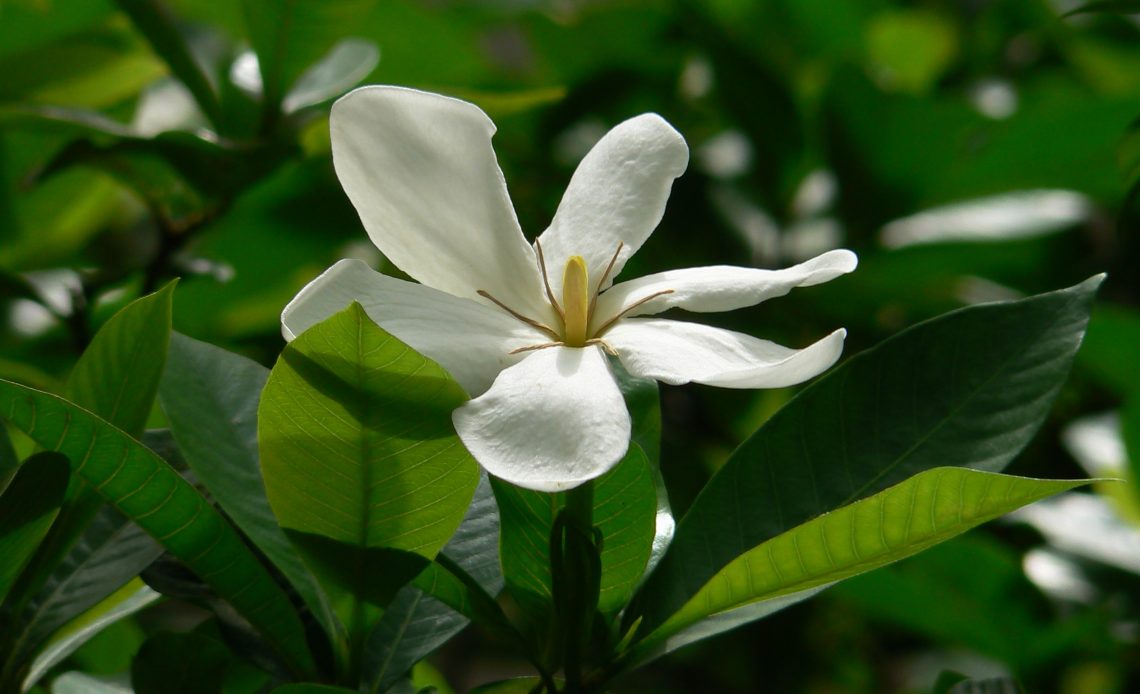

We’re here to help! Wild Yards is a completely free website that is 100% dedicated to helping you create a wildlife-friendly, sustainable yard. Read more
WildYards is reader-supported. When you buy a product through a link on our site, we may earn a comission. Every product is independently selected by our (obsessive) editors and our reviews are unbiased and objective. Read more about our mission or our privacy policy.
The gardenia is a very popular flower choice among gardeners due to its impressive shape and its bright, white hue that can lighten up any garden! They can grow year after year when they are well looked after, and provide a beautiful smell to wash over your yard. But, are they worth growing if you want to attract pollinators – and do hummingbirds like gardenias?
Hummingbirds, sadly, tend to avoid gardenias. Hummingbirds generally love all flowers with a high nectar content – and while that’s not all they are looking for, these demure, delicate blooms simply don’t appeal to your winged pollinators. However, while they don’t attract hummingbirds, some pollinators still enjoy their nectar-filled buds.
Why don’t hummingbirds like gardenias?
Similar to geraniums, hummingbirds don’t tend to attract gardenias due to their shape and color. They tend to prefer brighter, more tubular-shaped flowers that are easier to feed on as and when they wish. Despite this, gardenias can attract other pollinators (a little more on this further down in this article).
When it comes to a preferred palette, hummingbirds tend to head for bright reds, oranges, yellows – and while they will feed on white blooms such as those of gardenias, they don’t fall under the typical palette of the average hummingbird’s taste.
Ultimately, there are flowers hummingbirds prefer that are more colorful and easier to feed on, which may also offer a larger bounty of nectar from which they can sup. For better results, consider growing zinnias, impatiens, and especially azaleas. Generally, the more colorful and more tube-shaped the flower, the better.
Do gardenias attract other animals?
Due to their bright white shade, gardenias commonly attract insects, specifically moths and bees. While many of us wild gardeners know about the importance of bees, moths are fantastic pollinators that can help your garden thrive. Under the cover of darkness, moths are more attracted to flowers’ scents rather than their color. They may choose to rest upon the thick leaves of the gardenia as they consume the nectar.
During the day, of course, wasps and bees are fantastic for the garden – and it is certainly still worth growing gardenias among other flowers and plants hummingbirds love. Unfortunately, these birds can be a little picky at times – though gardenias can and will still prove useful for propagating a wild yard.
Are gardenias difficult to grow?
Gardenias, like any flowers, need a specific degree of attention and care to grow properly. However, providing you are willing to invest time and effort, you will unlikely find cultivating them a chore.
If you are interested in growing gardenias, check your place on the USDA hardiness map. This guide will help you ascertain whether these blooms can persist in your regional soil. Gardenias tend to be a little fickle, usually only growing well in USDA zones eight through eleven. They tend to prefer the warmer months, and will normally only persist as outdoor plants (all the better for wild visitors, then!).
Despite their hardiness in the warmest seasons, always start by planting gardenias in spring or autumn, when the temperatures are neither too hot nor too cold. They will need well-drained soil, and planting with organic matter such as moss or bark will help keep the moisture retained around the plant.
Leave plenty of room around them, and remember to get rid of any weeds that could drink up that useful moisture. It is best to remove weeds by hand to get at the roots. Avoid using chemical sprays and pesticides wherever possible around your gardenias, as you may do them more harm than good.
Gardenias need plenty of sunlight – however, too much harsh light can harm them, so consider growing them in an area dappled with light and gentle shade, especially to protect them during the hotter parts of the day.
With careful watering and housing, your gardenias will likely thank you by producing flowers for the seasons ahead. However, remember to deadhead and prune your gardenias as you go along. This will help promote more blooms and keep your gardenias in flower for longer.
Which plants are better to attract hummingbirds with?
The list of plants hummingbirds love is fairly extensive, with annual blooms such as the bright, colorful fuchsia and the stunning, trailing lantana likely to be safe picks.
If you prefer perennials, consider planning butterfly bushes, salvia, and trumpet creepers – the latter being particularly well-loved for its tubular-shaped blooms. Cardinals, lavender, and clematis also make for great, natural hummingbird attractants.
Crucially, if your chosen plant or flower is bursting with color and boasts a tubular or trumpet shape, it’s all down to the nectar. Be careful with some ornamental plants in this regard – and especially tread carefully with hydrangea, as some tend to be infertile, and won’t give much back to wild visitors. Like gardenias, they are lovely to look at – but not necessarily the best pollinator hubs!
